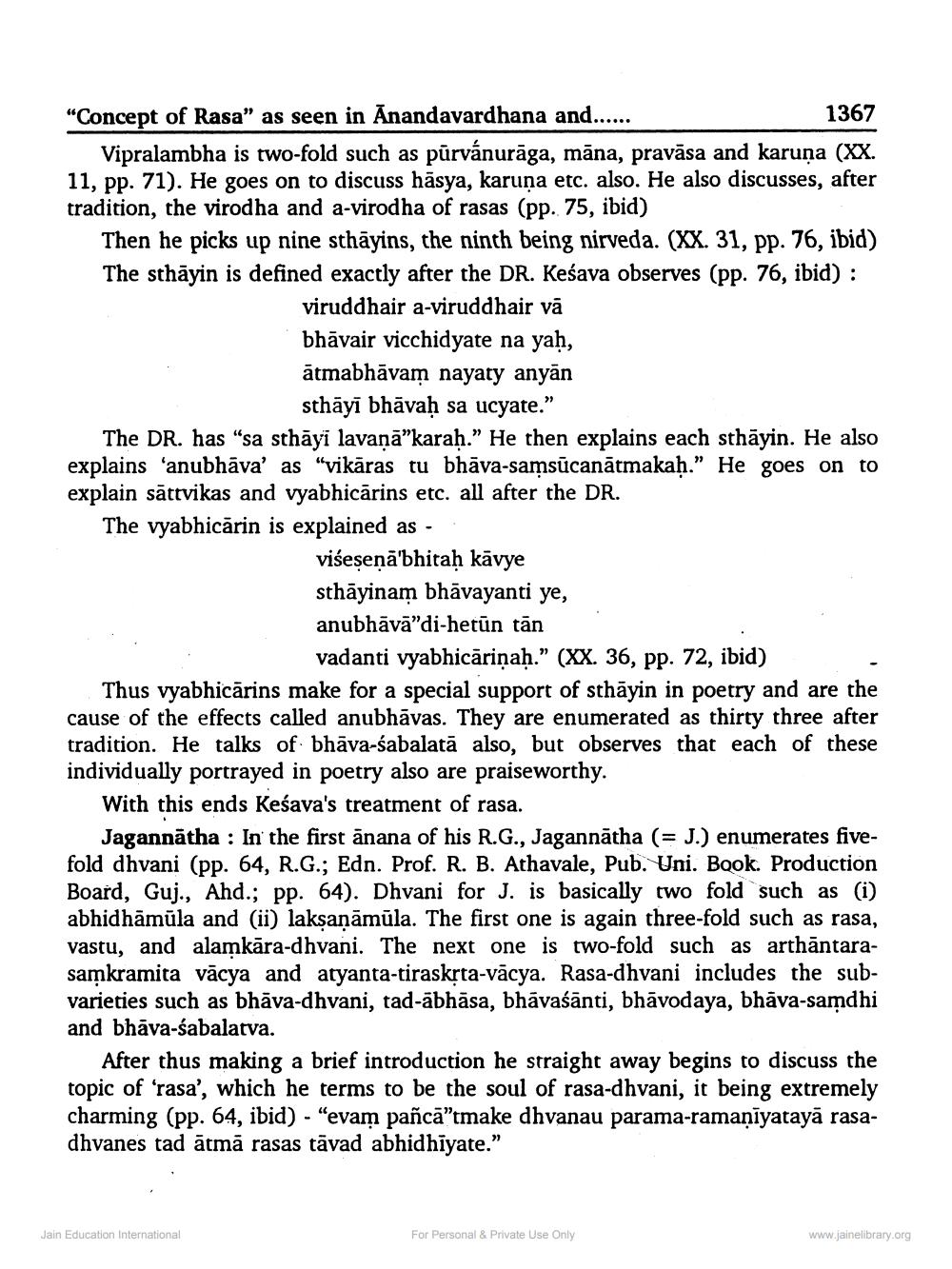________________
"Concept of Rasa" as seen in Anandavardhana and......
1367 Vipralambha is two-fold such as pūrvánurāga, māna, pravāsa and karuņa (XX. 11, pp. 71). He goes on to discuss häsya, karuna etc. also. He also discusses, after tradition, the virodha and a-virodha of rasas (pp. 75, ibid)
Then he picks up nine sthāyins, the ninth being nirveda. (XX. 31, pp. 76, ibid) The sthāyin is defined exactly after the DR. Keśava observes (pp. 76, ibid):
viruddhair a-viruddhair vā bhāvair vicchidyate na yaḥ, ātmabhāvam nayaty anyān
sthāyī bhāvaḥ sa ucyate.” The DR. has "sa sthāyi lavanā”karah.” He then explains each sthāyin. He also explains 'anubhāva' as "vikāras tu bhāva-samsūcanātmakah." He goes on to explain sātrvikas and vyabhicārins etc. all after the DR. The vyabhicārin is explained as -
viseșeņā'bhitaḥ kāvye sthāyinam bhāvayanti ye, anubhāvā"di-hetūn tān
vadanti vyabhicāriņah.” (XX. 36, pp. 72, ibid) Thus vyabhicārins make for a special support of sthāyin in poetry and are the cause of the effects called anubhāvas. They are enumerated as thirty three after tradition. He talks of bhāva-babalatā also, but observes that each of these individually portrayed in poetry also are praiseworthy.
With this ends Keśava's treatment of rasa.
Jagannātha : In the first anana of his R.G., Jagannātha (= J.) enumerates fivefold dhvani (pp. 64, R.G.; Edn. Prof. R. B. Athavale, Pub. Uni. Book. Production Board, Guj., Ahd.; pp. 64). Dhvani for J. is basically two fold such as (1) abhidhāmüla and (ii) laksanāmúla. The first one is again three-fold such as rasa, vastu, and alamkāra-dhvani. The next one is two-fold such as arthāntarasamkramita vācya and atyanta-tiraskrta-vācya. Rasa-dhvani includes the subvarieties such as bhāva-dhvani, tad-abhāsa, bhávaśānti, bhāvodaya, bhāva-samdhi and bhāva-sabalatva. After thus making a brief introduction he straight away begins to discuss the
'rasa', which he terms to be the soul of rasa-dhvani, it being extremely charming (pp. 64, ibid) - "evam pañcā"tmake dhvanau parama-ramanīyatayā rasadhvanes tad ātmā rasas tāvad abhidhiyate.”
Jain Education International
For Personal & Private Use Only
www.jainelibrary.org




